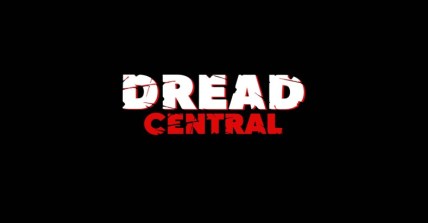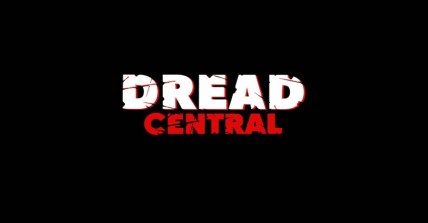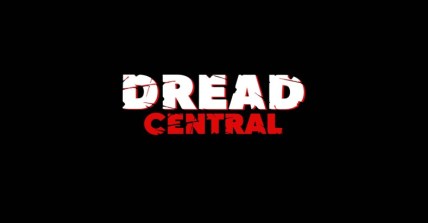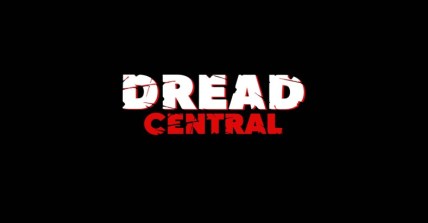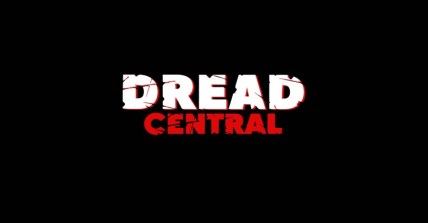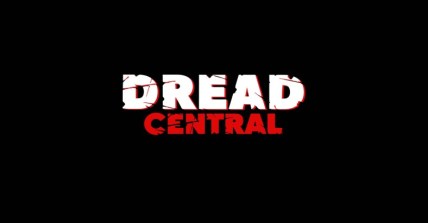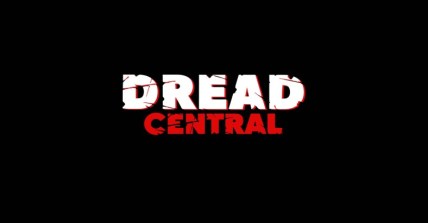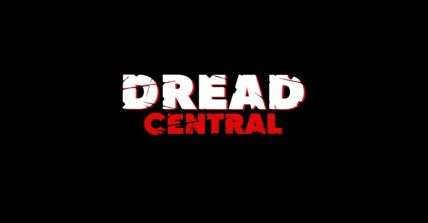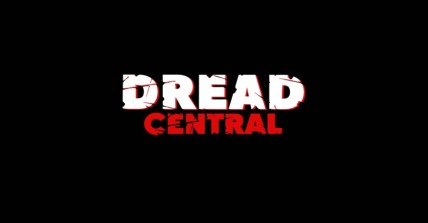The Visit – M. Night Shyamalan and Jason Blum Talk the Film and More!

In The Visit (review), Becca (Olivia DeJonge) and her younger brother, Tyler (Ed Oxenbould), say goodbye to their mother as they board a train and head deep into Pennsylvania farm country to meet their maternal grandparents for the first time.
Welcomed by Nana (Deanna Dunagan) and Pop Pop (Peter McRobbie), all seems well until the siblings start to notice increasingly strange behavior from the seemingly charming couple. Once the children discover a shocking secret, they begin to wonder if they’ll ever make it home.
Written and directed by M. Night Shyamalan and produced by Jason Blum, this movie opens in wide release on September 11, 2015. We got a chance to catch up with these two horror neo-legends in Beverly Hills, CA, where we picked their brains about The Visit.
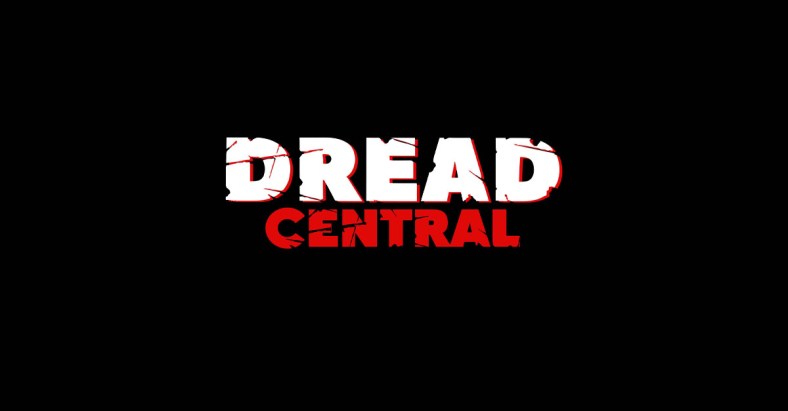
Dread Central: Night, I didn’t notice your director’s cameo in this one. Were you maybe one of the guys on the cruise ship having the hairy chest contest?
M. Night Shyamalan: You know, I so wanted to be in this one. This is the problem with being Indian. It’s hard to be one of the family members. Everybody is white usually. I was actually thinking about playing her boyfriend, Kathryn Hahn’s boyfriend. In the original script, he comes back in the last scene, and I didn’t want everybody getting thrown off. So I didn’t put myself in there. But that’s a great idea!
DC: Did having the found footage format give you all-new cinematic tools for the misdirects and keeping us guessing?
MNS: We make a pretty strong distinction if you [Jason] want to talk about that.
Jason Blum: Yeah. We do a lot of found footage movies. And I really feel like this is very different. It’s a mock documentary. And I almost feel like they are opposite because found footage is really purposely sloppy. And the person documenting found footage has nothing to do with wanting to be a filmmaker. They’re amateurs and they are catching things by accident. The lead of this movie is the opposite. She loves cinema and she’s making a documentary to kind of bring her family together. So I feel like one of my favorite things about the movie, actually, is that the shots are very composed and it’s not a shaky camera, and it’s actually very far away from found footage. But mock documentary for sure and shot by someone who loves cinema and is concerned with how it looks. And I think that did provide a new way for you to shoot, right?
MNS: I storyboard every shot of my thrillers in general. I draw them out and do them. The difference in this one is I had to put it in the screenplay. So it’s in the screenplay where the shots were because he picks up the camera. They leave it on the shelf. She is carrying it in as they enter the door. That’s in the screenplay. So I really kind of… as I was writing it, I was kind of storyboarding it. And then the really wonderful part about making smaller movies sometimes is the limitations create opportunities.
I know this is going to sound like pie in the sky stuff, but we can’t leave locations much when you are making a smaller budgeted movie. So I found this farmhouse. I shot it in Pennsylvania near where I live. There was a farm that was going under foreclosure from a bank. I said, “Could I have this? Can I rent this from you for six months before you put a fire sale?” And then I gave them the whole spiel of like, “Once I make a movie there, you can sell it for more” and all of that stuff. So they said, “Okay, okay. You can have it for six months.”
So we had this incredible situation where I had the actual house where we were shooting through pre-production. So I would go with the actors and we would rehearse in the rooms, on the stairs, in the kitchen. And I’d say, “Yeah, you come around there,” and I would be there with the cinematographer, or I would sit there. There was a lot of times where I went to the house… it was really creepy, actually. I would go to the house by myself and just sit there and just think of the shots. And it was different because I could really, really plan it out and think it through: “We want to tilt here. This is said off-camera,” all of those things. And I would take copious notes on all of it. It’s how I like to make movies. But the challenge was to make it look like it was spontaneous.
DC: Sort of playing off of what you are talking about with the shooting, did you allow the kids to shoot some of the shots? How restrictive were you with the dialogue? Was there room to ad-lib?
MNS: There was no ad-libbing dialogue-wise.
JB: That’s another bit on found footage… On the Paranormal Activity movies there’s no script. There’s just an outline, and then it’s all improvised. This is really much more… it’s totally a different way to approach this kind of filmmaking.
MNS: I don’t mind anybody suggesting. It has to earn its way in, but generally speaking, I have so much demands on them that they’re not thinking about being writers at all. I’m just like, “Hey, that’s not where the character is coming from,” when you give a million suggestions and they are trying to have it. Usually, if they add handles it’s like “um,” “uh,” “this,” or something. And I’m like, “Get rid of those handles. That’s just crutches. Get rid of that. Go right to the salient. Go right to the line. This is why he or she said that kind of thing.”
DC: Did the kids shoot, at all?
MNS: Yes. There was one part that the kids shot. Mostly it was our operator, who is a fantastic operator… I actually used the cinematographer, Maryse Alberti, who shot The Wrestler for Darren {Aronofsky]. It was actually Darren that recommended her, luckily enough, and she was available and wanted to do it. The kind of intimacy of the camerawork was from her and the operator of how to portray… when you are holding handheld, how not to feel like handheld. Don’t make it feel like handheld. This is someone who is trying to make it beautiful. So they’re taking care to kind of turn and hold it, all of those things. And then the door… like they had the door, that wasn’t intended, that kind of thing. So where the intention and the unintended, all of that stuff… But we had one day which was a problem, which was the underground where the grandma crawls. The camera operator was too big. He was a grown man. He couldn’t keep up and go and crawl under there. This is what happens on big movies all the time. The grips all got together: “We can figure this out. We can make a contraption. Just give us 10 minutes. We’re going to make a contraption.” And they were like [makes robot noises] and they made this mechanical thing. And, of course, an hour and a half later they are trying to pull it and it’s not working and it’s tipping over. And we’re all sitting there and I’m like, “I’m dying. I’m dying. One third of the day is gone.” And I look over and Ed is there. And I’m like, “Ed, why don’t you just hold the camera?” And he was like, “Yeah!” And then he just ran underneath like this. He was squatting and he ran. So he did all the camerawork under the house. He was so proud that day.
DC: I was going to ask you, there’s actually a condition called “gerontophobia”. I was just wondering, when you were younger, did you have any fear of old people? What was the inspiration of writing this?
MNS: Basically, when I’m writing something, I’m thinking about: What is the subject of the piece? The subject of the piece is our fear of getting old, which is a variation of our fear of dying. I have to believe there’s a primal thing that we’re talking about, even though it’s fanciful and we’re doing it all in a kind of tongue-in-cheek manner. But what is the thing that makes it scary? What is the psychology behind it? Actually, I met my wife at NYU in Abnormal Psychology class because I love psychology—why we do things. What does the color red do? What is this? What does this camera angle do? All of that stuff. That’s the primal thing of it, that we’re scared of getting old. Playing on that is a powerful conceit. We talked a lot about that…
JB: Totally.
MNS: My grandparents have passed away now. But my grandparents were classic Indian grandparents. My grandmother would put so much powder on her face it was like a kabuki… and she’d come down the thing. And I was 8, 9 years old. And my grandfather apparently had no teeth because he would take out his teeth and then put them in the glass. And then he would try to scare me with them. He was very mischievous, too. And then I started to try to scare them when I was as little older. Now I feel bad about that. [laughter]
But my parents now are grandparents, who have not seen the movie yet, and I’m very nervous for them to see it. They are going to see it at the premiere.
JB: Oh, is that when they are going to see it?
MNS: Yeah. That’s when they are going to see it.
JB: You’re really holding out on them.
MNS: I don’t know what they’re going to think about all this stuff and the diaper and all this stuff. So we’ll see. [laughter]
DC: I noticed that both the actors who played the grandparents have extensive stage experience. I wondered if you were looking for those kind of people to create more of a kind of dramatic, over-the-top performances?
MNS: Yeah, someone asked me this morning to describe the films that I do. What is it… we spoke about this… taking B-genre movies and treating them like they’re A-dramas. Get the cinematographers, the actors, but it just happens to be about aliens and ghosts or crazy people…
JB: …or killers.
MNS: Or killers. My directing style is long takes, especially on this one. The longer take I can do, the more I have to work on it with cuts, the better. That requires that my coverage – traditionally it would be a close-up of Jason, a medium of Jason, a wide of the two of us – you cover yourself and then you figure it out in the editing room. I don’t think like that. I don’t shoot like that. I choose whose scene it is. It’s Jason’s scene. He’s figuring out, “Why the hell did I ever do this movie with this…” He’s thinking that or seething from what I just said. And he’s angry, what he thinks about you laughing at him is hurting him, he just wants to punch me. I’m going to accentuate that. They’re laughing and it’s pushing in on him and it’s getting louder. It’s all about him. I’m committing to him. I’ve got that with all of my coverage. The only opportunities I have to adjust are this theater-trained actor who’s used to going up on stage and giving a different performance every day at 2 o’clock and at 8 o’clock and just committing, I’m doing this angry, “go.” So take 7, take 14, take 21… that’s my coverage. I need actors who are versed in that style. They don’t edit themselves asking, “Can we do that again?” Because they do long takes, there’s a trust that happens on the set because if he and I are the actors and take 2 or take 3 we’re not getting there, but suddenly on take 4 I get it and I do something that ignites him, he gets it, because we’re tired together. He gets something that’s incredibly truthful and suddenly you get that magic take and theater actors know this. They know when they have magic on stage when everybody’s connected in this magic of storytelling. That’s my philosophy. I love, love stage actors.
JB: I think the other thing that found footage and documentary do share is that you can’t have recognizable people in a found footage movie. It’s like, “Wait a second; how did Brad Pitt suddenly get in this footage that was captured by accident? You have to find people who are great actors, but who aren’t recognizable, which is hard because most people get recognizable and get famous because they’re good at what they do. You’ve got to find people who are great, but who haven’t been discovered yet.
MNS: So, the pool of world-class actors that have done theaters, there’s a higher opportunity of grabbing somebody from that pool. Also, interestingly, the two kids are from Australia, totally random, and they’re from different sides of Australia, but that again makes sense in light of what Jason just said, where are the biggest pools of untapped talent – stage, Australia, that can do an American accent. I don’t know if you know this, but it’s easiest to go from Australian to American, that’s the easiest to go from without losing your palette of colors as an actor. The harder that transition is, the more you squash your paint set of the colors that you can use. It’s very risky to try to do accents.
DC: Along those lines, with the casting, you hit the jackpot with the young actors. Tell me about finding them and the excitement and seeing what they were able to do with the parts in the moment, ‘cause it adds so much for an audience member to the movie, seeing these great discoveries of yours and investing in them. They really capture the audiences’ attention.
MNS: I can’t take, really, too much credit for what they did. Being very, very lucky is a part of it too. Making movies is an act of faith. When I write these characters, I just pray that these individuals exist in the world. I’m not looking for a young Daniel Day Lewis who transforms from one role to the next. That’s not who I’m looking for. I’m looking for these kids to exist somewhere. That’s who they are in real life and they’re going to do a variation on that for me. These are my criteria – I need them to be super intelligent. I need them to be really smart because we’re going to talk like actors, director and actor, and we’re going to get very deep about complexity and I’m going to call you on it every time you do something that doesn’t defend your character. I use that term a lot, “You’re not defending your character because you sounded like an ass right now. Is that what you wanted to say about him or her right now? We could try it again, but your choice was one where you weren’t respecting him or her, so you’re really talking on a certain level.” The other thing is I really require the families to be healthy, positive families. They’re my co-directors with the kids. I literally just have them sit there, they don’t say a word and I pound the kids about everything that I’m doing, the aesthetics, who the characters are, the process they need to have. Just so they hear it because in the car they’re going to go, “Mr. Shyamalan said you need to do this.”
Sometimes there’s a moment where I don’t have the vocabulary to speak to the kid. For me, as the director, I’m taking top directing Jason in the scene, and I say, ‘Jason – the character is this. He’s a producer, he does this and blah-blah-blah.’ And he’s not getting it. I’ll keep on doing my analysis as I’m looking into his eyes and I see: click. And then I’ll go roll cameras. I’m looking for the vocabulary to go speak to him. And sometimes with children I just can’t get there and I need someone who is a master of their vocabulary to do it, so I will call the parent in. Even on The Visit, I can tell you there was an intense moment with the boy in the kitchen, where he releases – and you know, it’s comedic, it’s scary, it’s emotional. All of those things. And I couldn’t get there to him, so I called the mom in and the mom was an actress, and I said, ‘This is what I feel – his humor comes from a guardedness.’ You know, humor is actually coming from a dark place, and we make fun of things and so he uses it a lot to keep a shield between himself and everybody else. I talk about the person. And to get to bottom of that, I go, ‘You have to let go of all that in this scene.’ We re-shot that scene again, but with the mom literally standing right there. I’m like, ‘I’m going to talk to you, and you’re going to talk to him. And everybody else is going to be really quiet. I’m going to say what the character needs, and you’re going to say it in Ed vernacular to him.’ I could see it going like this to her eyes. She went click, like Jason’s eyes went click, and then she would [say it] in her mom-to-the-kid language and then his eyes would light up. I’d go, ‘Roll, roll,’ and then… But that’s like emergency, pull the parachute kind of a move. That happens once a movie, you can’t pull that too much because eventually they’ll get into the mom-kid relationship, but you can pull that once.
DC: What about the double cameras and mockumentary shooting style?
MNS: Well, that’s critical to me, because that’s directing as well. As Jason has said, the camera is an extension of those characters. So – why, and what were they thinking? So, if the boy was trying to trick his sister, or the sister was trying to trick the boy in the closet scene – she set the camera up the catch this. So it’s on a tripod, it’s locked off in the living room staring at the closet. That’s all that happened. That’s all I would tell her what would happen, in their characters’ [minds]. So, it’s not added work, it’s the natural homework we would have done anyway. It’s manifesting in literal cinematography in this particular movie, but it’s the same practical homework you should do when you’re really digging into the performances, you know?
DC: Night, what’s the scariest part of the movie, for you?
MNS: A lot of great questions. I believe it was probably Grandma in the rocking chair facing the wall. It’s actually from an Andrew Wyatt sketch… he’s an artist who actually lived near me, and it’s a sketch that he did of this old couple. It’s beautiful. It’s like a study of this old woman with a rag around her head and she’s just staring at the wall. She was just thinking. And I thought this was the scariest thing ever. I took it and I Xeroxed it, and I said, ‘This is what we’re making.’ I kept that with a two-line summary of the movie, and that’s what I had first, this old lady on a farm just staring at the wall in a rocking chair.
MORE ON NEXT PAGE!
Categorized:News

